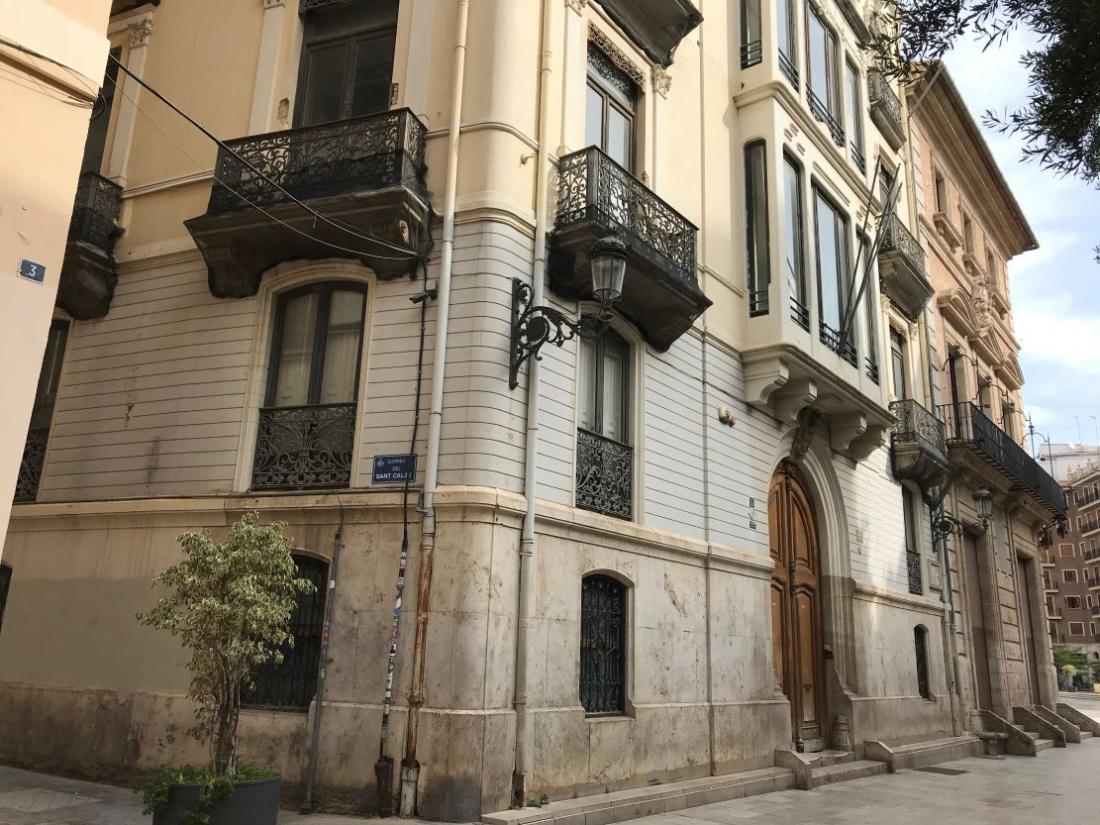BEEP: From ancient palace to energy efficient offices in Spain

The Valencia Institute of Building (IVE), the Spanish partner of the BEEP project, presented a paper at the Rehabend Euro-American Congress on Construction Pathology, Rehabilitation Technology and Heritage Management.
FULL PAPER (code 163)
This paper presents the results obtained so far by applying the BEEP methodology in a heritage building located in the Spanish city of València (Palacio de Calatayud). This methodology is based on the specific application of BIM for cultural heritage (HBIM, Historic Building Information Modelling), developed with the goal of facilitating strategies to the local public administration for the deep renovation of heritage buildings.
To the geometric dimension of the HBIM model (3D), dimensions of time, costs, and environmental/energy behaviour of the building (4D, 5D, 6D) are added. The resulting enriched model (EE-HBIM, Energy Efficiency Heritage Building Information Model) is the basis for the development of three energy renovation scenarios in the short, medium, and long term.
The Palacio de Calatayud is an important work of bourgeois architecture designed at the beginning of the 20th century and located in the foundational centre of València. In the 1980s, the regional government undertook renovation works on the entire building complex to adapt it for administrative use. Although it is currently in disuse, it is to be completely refurbished to make it suitable for administrative use again. The energy renovation project for the complex, which also includes the implementation of energy efficiency and renewable generation, is about to be put out to tender.
About the BEEP project:
BEEP project aims at strengthening the use of Building Information Modelling (BIM) to enhance energy efficiency in buildings. The testing of this emerging technology on built heritage will be performed to demonstrate its scalability to the entire building stock. The project will provide public administrations with a powerful method for the energy rehabilitation of public buildings to be supported with private funds through the Energy Performance Contracting (*). The project main outcome will be an innovative methodology based on the integration of emerging technologies tested on 9 heritage public buildings located in Italy, Spain, Cyprus, Jordan, Palestine, Lebanon, and Egypt.
(*) Energy performance contracting (EPC) is a mechanism for organising the energy efficiency financing. The EPC involves an Energy Service Company (ESCO) which provides various services, such as finances and guaranteed energy savings. The remuneration of the ESCO depends on the achievement of the guaranteed savings. The ESCO stays involved in the measurement and verification process for the energy savings in the repayment period. ESCO and energy performance contracting are mostly found in the public sector and to a lesser extent in the industrial and commercial building sectors (Hilke and Ryan, 2012). Source: European Comission
Follow BEEP project: Web, Facebook, Twitter









